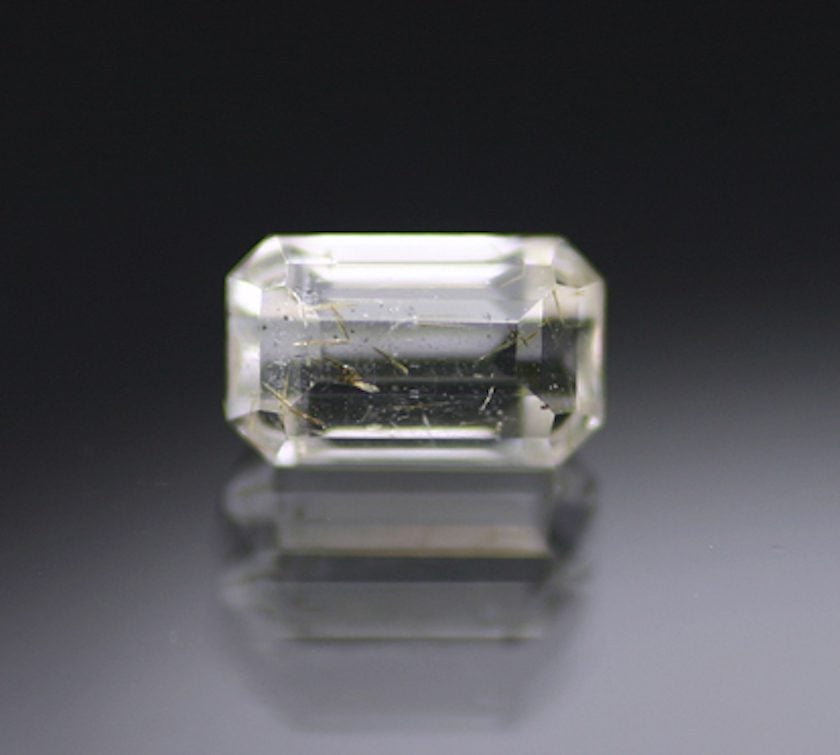Uncommon Elements Make Uncommon Gemstones
Why are some gems so rare in nature? Learn which elements in the Earth’s crust are the rarest and how these ingredients help form uncommon gemstones.
1 Minute Read
Since the principal source of ingredients for gems is the rocky Earth itself, knowing the abundance of the elements that make up the minerals in the Earth's crust will help us understand why there are common and uncommon gemstones.
The Abundance of Elements in the Earth's Crust
The following figures are estimated percentages of the Earth's crust by weight.
Interested in this topic?
This article is also a part of our Professional Gemologist Certification Course, in the unit An Introduction to Gemology.
The eight most common elements in the crust are:
- Oxygen (O) 46.4%
- Silicon (Si) 28.15%
- Aluminum (Al) 8.23%
- Iron (Fe) 5.63%
- Calcium (Ca) 4.15%
- Sodium (Na) 2.36%
- Magnesium (Mg) 2.33%
- Potassium (K) 2.09%
All other elements represent a mere 0.66% of the crust.
From a gemological perspective, the following uncommon elements in the Earth's crust are of particular interest:
- Manganese (Mn) 0.095%
- Carbon (C) 0.02%
- Zirconium (Zr) 0.0165%
- Vanadium (V) 0.0135%
- Chromium (Cr) 0.01%
- Nickel (Ni) 0.0075%
- Copper (Cu) 0.0055%
- Cobalt (Co) 0.0025%
- Lithium (Li) 0.002%
- Beryllium (Be) 0.00028%
A World of Oxygen and Silicon
Oxygen and silicon make up more than 74% of the Earth's crust. It's not surprising that quartz (SiO2) is one of the most common gemstone minerals.
However, oxygen and silicon are also found in some uncommon gemstones. Spodumene is a gemstone mineral composed of oxygen, silicon, aluminum, and lithium (LiAlSi2O6). Lithium makes up just two thousandths of 1% of the Earth's crust.
Kunzite, a pinkish variety of spodumene, gets its color from the addition of another uncommon element, manganese.
From Emery Boards to Uncommon Gemstones
Corundum (Al2O3) is a common mineral composed of aluminum and oxygen. You'll frequently find it on sandpaper and nail files as emery. Gem-grade corundum, however, is considerably more rare, even rarer than diamonds. Corundum gems that include a rare trace of chromium are red in color. This red variety of corundum is more commonly known as ruby. Chromium is just one hundredth of 1% of the Earth's crust.
Beryllium is less than three ten-thousandths of 1% of the Earth's crust but it's a primary ingredient of beryl gemstones (Be3Al2Si6O18). With the addition of chromium, another rare element, beryl becomes emerald.
Likewise, the gem species spinel takes on a very rare cobalt blue color with the addition of cobalt, another rare element.
Donald Clark, CSM IMG
Donald Clark, CSM founded the International Gem Society in 1998. Donald started in the gem and jewelry industry in 1976. He received his formal gemology training from the Gemological Institute of America (GIA) and the American Society of Gemcutters (ASG). The letters “CSM” after his name stood for Certified Supreme Master Gemcutter, a designation of Wykoff’s ASG which has often been referred to as the doctorate of gem cutting. The American Society of Gemcutters only had 54 people reach this level. Along with dozens of articles for leading trade magazines, Donald authored the book “Modern Faceting, the Easy Way.”
Related Articles
Gemstone Care Guide
How Do Opals Form?
Precision Faceting a Story Gemstone: Custom Faceting Advice
Understanding Gem Synthetics, Treatments, And Imitations, Part 2: Crystal Growth
Latest Articles
Quartz Toxicity: Understanding the Risks for Jewelers and Wearers
Synthetic Amethyst: What is it and How is it Made?
Hambergite Value, Price, and Jewelry Information
Pearl Simulants: How to Spot Faux Pearls
Never Stop Learning
When you join the IGS community, you get trusted diamond & gemstone information when you need it.
Get Gemology Insights
Get started with the International Gem Society’s free guide to gemstone identification. Join our weekly newsletter & get a free copy of the Gem ID Checklist!
